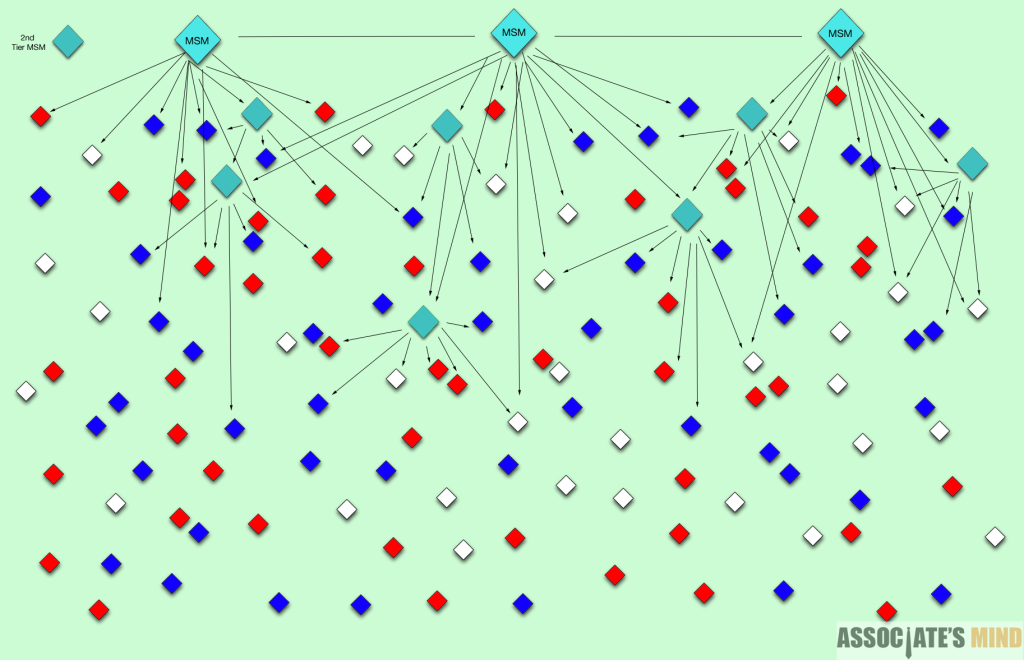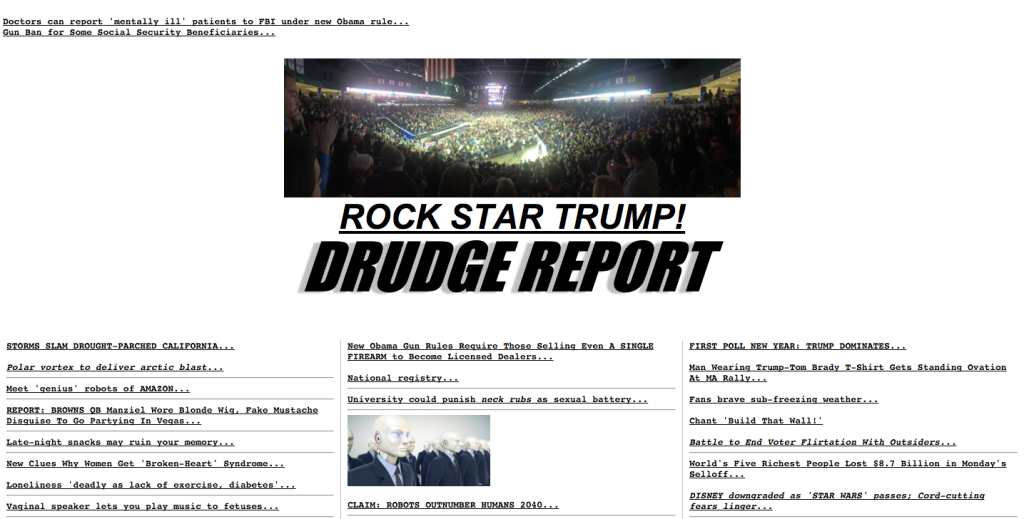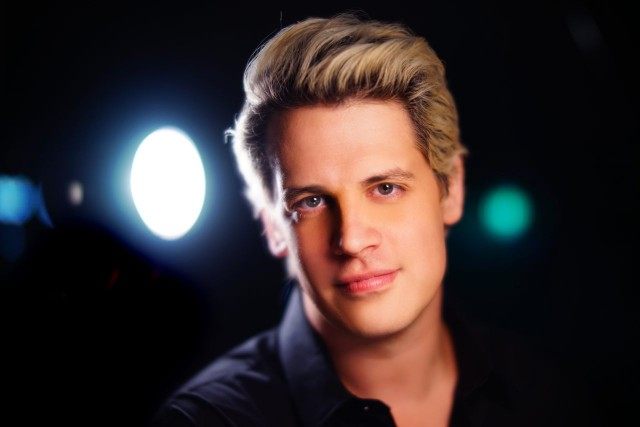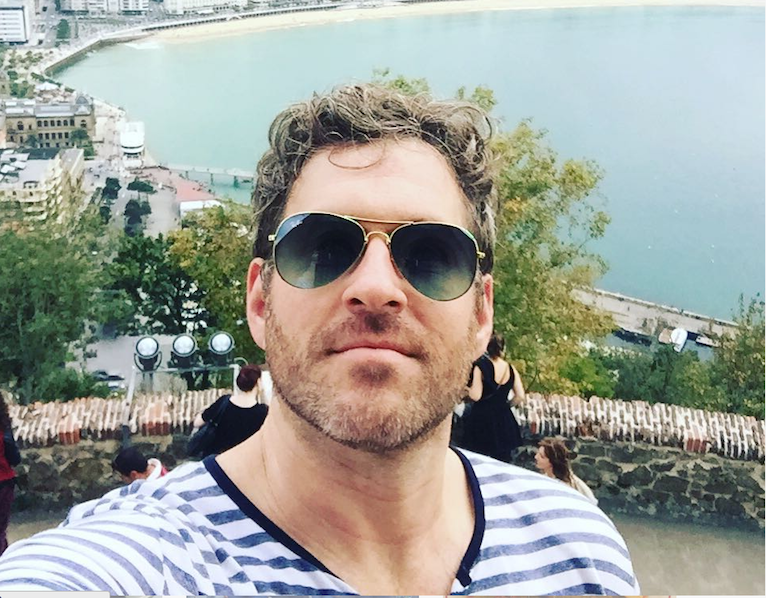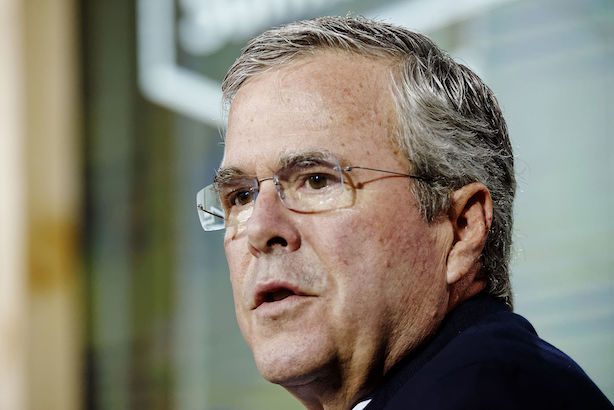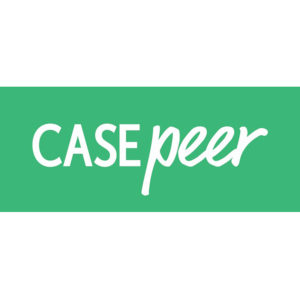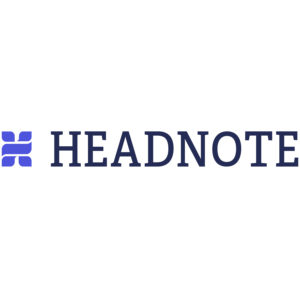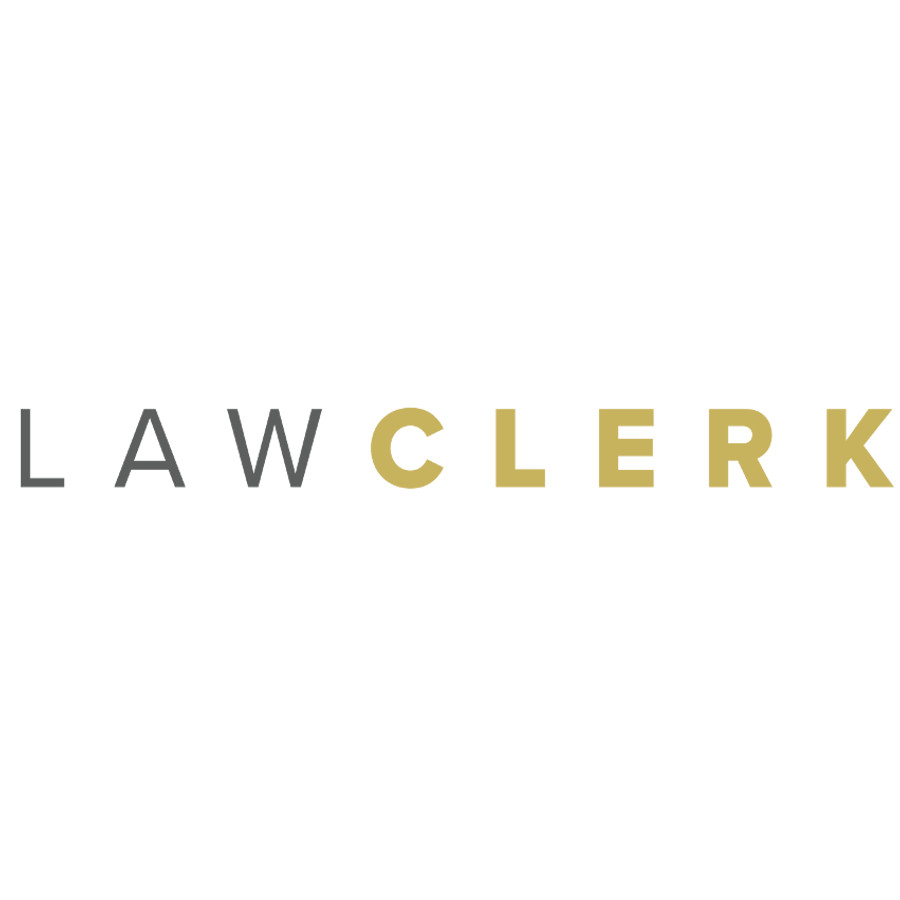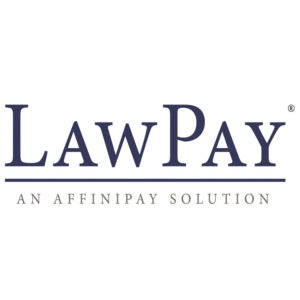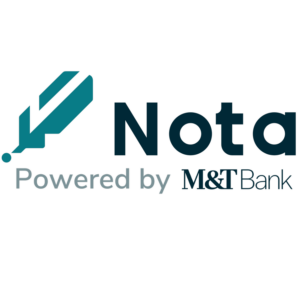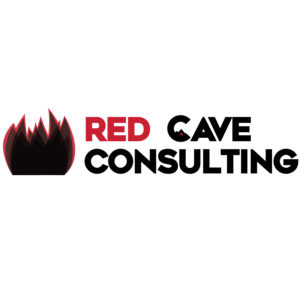How the hell did Donald Trump get so popular?
It’s something on the mind of many people. If you’re reading this, you’re likely one of them. Pundits predicted his stumble and fall from the national spotlight, but he continues on.
People call him racist or that he is a new Hitler. People say he will cause the downfall of America and should be ignored. But Trump shrugs off criticism, labels roll off him, and he continues to be popular.
How???
How Trump continues to be popular is distinct from why he is popular. For instance I can tell you how I made a cake, but that doesn’t tell you why I made a cake.
Yet everyone in the media continues to struggle with both when it comes to Trump. The only person to consistently explain why Trump continues to be popular is Dilbert cartoonist Scott Adams. That’s right, a cartoonist began explaining why Trump can take the presidency back in August of 2015 when everyone else was predicting catastrophe. Adams has been the sole voice predicting the why of Trump’s ascendence.
But not the how.
The reason people have struggled with how Trump became popular is that they lack a framework to understand it.
Hell, they lack a vocabulary.
This is because almost everyone continues to have a skewed understanding of how people get information, and why they make decisions, in the 21st century.
- How does information spread between people?
- Why does some information spread between people and other information does not?
- Why is traditional media losing its ability to spread information and influence people?
- Why does it seem like many people are insular and less open to new information?
- Who do people rely on for information when they form opinions?
- Why do people depend on certain people for information but not others?
Without a framework, without a vocabulary to answer these questions, then you can’t explain how Trump continues dominate the polls.
What follows will provide you the framework.
If you’re trying to read this on a phone, I would suggest you wait. The following is 10,000 words, with 40+ diagrams and pictures. This is not a quick read. Nor a light one.
Yet it will enable you to understand how Trump became popular, while also touching on why. It will cause you to question who you are connected to on social media. It will give you an understanding of how almost anything becomes popular online.
If you commit to this material, you’ll be able to see the Matrix.
Contents
Dropping The Anchor
Donald Trump Wants To Ban Muslim Travel!
If you marginally pay attention to American politics, you heard Trump suggestion of a ban on Muslim travel. You probably didn’t hear exactly what he said, but somehow, someway, you are aware that Trump wanted to restrict Muslim travel to the U.S.A.
But Trump probably doesn’t want to ban Muslims traveling to the United States. It’s much more likely Trump wanted to “anchor” public opinion on the issue. Anchoring is a cognitive bias describing the tendency to rely too heavily on the first piece of information offered (the “anchor”) when making decisions.
Trump anchored debate on Muslim travel in the United States. With Trump boldly setting the stakes so high, everyone had to react to his position. By starting out with an extreme position, Trump anchored the issue in his favor. If elected, he won’t have to compromise as much if he had taken a lesser initial position. Six months from now, many people will view some level of restrictions on Muslim travel as “not that bad,” but only Trump anchored one of the goal posts in their mind.
Trump’s use of anchoring is the first step to understanding why he is able to be popular, but it still doesn’t get to “the how” of how he came to be popular. The two are very closely tied together, depend on one another, but aren’t the same. A large part of “the why” of Trump’s popularity is tied to his exploitation of anchoring and other cognitive biases.
Part of “the how” is tied to cognitive biases as well. The most prominent being availability cascades.
Origin Of Availability Cascades
In 1999, in an article for the Stanford Law Review, professors Timur Kuran and Cass R. Sunstein put forth a theory on how information and influence spread, called availability cascades. It attempted to explain why regulation of risky products or environmental risks is so often driven by public opinion movements that run counter to research.
In other words, people make decisions based on what is top-of-mind and has emotional resonance, not with empirical evidence or a scientific foundation.
In the 2003 winter issue of Regulation, the CATO Institute summarized Kuran’s research, noting that people actually have two types of political preferences, private and public, and shift between the two based on the utility it provides them:
Cascades are related to tipping points in public opinion and, ultimately, to social and political revolutions. Timur Kuran has developed a model to explain changes in public opinion that lead to sudden and unexpected political revolutions. Major examples include the French revolution in 1789, the Russian revolution in 1917, and the Iranian revolution of 1977–1978. Why did public opinion seem to change so rapidly that contemporaries (and even some revolutionary leaders) were taken by surprise?
The crux of Kuran’s theory lies in the assumption that individuals have two types of political preferences, private and public, that do not necessarily coincide. Public preferences are fully expressed and contribute to public opinion, but they may not be the real preferences of the people who express them. Some private preferences may be kept secret. People engage in this sort of “preference falsification” in order to get “reputational utility” through favors, or at least non-repression, from the regime. But an individual will only falsify his preferences up to a certain point, because he also gets utility from “integrity” — that is, from the coincidence of his public and private preferences.
An individual decides which preferences to express so as to maximize his utility by balancing reputational and integrity contributions.
A Theoretical Cascade Model
An availability cascade is simply a self-reinforcing process in which a collective belief gains more and more plausibility through its increasing repetition in public discourse (“in our media-mad society, repetition is as good as proof”). To see how this works let’s modify the example from Regulation mentioned earlier:
This a reduced, theoretical model that doesn’t quite accurately capture how availability cascades function in the real world. But it is a workable model that helps understand the concept, so let’s roll with it for a bit.
As the diagrams shows, the stronger and more prevalent the High public signal is, the more likely people further down the cascade are to adopt it. If both Adam and Betty adopted the information, by the time it reaches Charlie, he will adopt it no matter what private High or Low signals he receives.
That means a person or organization’s position in an availability cascade is incredibly important.
Heuristics And Your Lazy Brain
One of the main reasons the cascade model works so effectively, and why cascade position is so important, is people’s immense reliance on heuristics – an approach to problem solving, learning, or discovery employing a practical method that’s not ideal, but gets the job done.
Cashier: “How are you doing today?”
You: “Fine, how are you?
Cashier: “Fine. Plastic okay?”
You: “Sure.”
Then you go back to ignoring each other.
You might not actually be fine. You might be going through a divorce or stressed out at work. You might have a pregnant wife or just ran a marathon. You could be at any degree of emotional high or low, but in that moment in the grocery store, you’re “fine.”
You don’t give the cashier significant attention because brains are lazy. Brains are wired for pattern recognition. Brains put together schemata, rely on stereotypes, and attempt to go on autopilot as often as possible. It might actually be better if you would pay attention in the checkout lane, but you don’t. You’re not present in the moment.
Yet your brain doesn’t rely on heuristics in only unimportant moments. Your brain attempts to rely on heuristics all the time. Relying on these mental shortcuts gives rise to a specific type of heuristic known as the availability heuristic – estimating the probability of an event on the basis of how easily instances of it can be brought to mind.
That is, the more readily you can bring an event to mind, the more likely you are to think that the event is likely to occur.
Which brings us back to Trump.
Trump’s Muslim Travel Ban
Before Trump came out with his Muslim travel ban, he and his advisors looked at terror attacks in 2015 – France in January, August and November, followed by the San Bernardino shooting in early December (roughly 72 hours before Trump’s travel restriction announcement) – and gambled on people not making decisions based upon reasoned analysis, but on availability heuristics. Or as Scott Adams wrote, emotion trumps reason.
Through years of business deals and negotiations, Trump knows people rely on availability heuristics – mental short cuts. Trump also knows what people say in public is different than what they say in private – it’s the essence of negotiation. At the negotiating table you never state what you actually want or are willing to take. You bluff, cajole, and bluster for a better result.
Due to a combination of skill and luck, Trump uses anchoring and heuristics to set the agenda for the presidential race. No one else has been close. Which is why many people are demanding that the mainstream media (“MSM”) should “just stop covering Trump! He’ll go away if MSM would just not give him coverage!” These people want to cut Trump off at the top of the cascade.
If it were 20 years ago, even 10 years ago, this might have worked. If MSM could stop Trump from spreading his message, then he would not be able to influence other people. But Trump takes advantage of something else almost everyone else is still grappling with, but Trump recognized.
Trump is not utilizing the traditional cascade model, but is instead relying on something else.
Not a cognitive bias, but a fundamental societal and cultural shift slowly taking place since the late 20th century. This shift upends the traditional cascade model on its head. It is a shift away from cascades and towards an entirely new model. A model so new and misunderstood, it doesn’t even have a proper name yet.
But I’m going to show it to you.
Mainstream Media Homogeneity
Think back to the availability cascade model pictured earlier. Now that you have a framework of how availability cascades work, consider the immense power the traditional media as possessed these past 50 years.
With the above in mind, consider that in 1965, there were only three television channels. There were only a few national newspapers and national radio broadcasts. There were numerous local periodicals and radio stations, but they largely relied on national wire services to provide them with information.
Opinions, interests, and viewpoints were homogenous because information providers were homogeneous. Outside or alternative influencers were few and far between.
But over time, things changed. News was no longer something that happened at 6 pm on network television, it became multiple 24/7 channels. Sports were no longer part of the news, they became sports networks. Cooking, gardening, kids, movies, and more all received their own outlets. But much of the news media didn’t really diversify because:
- Original reporting requires lots of human capital, time, and money.
- There is only so much actual “news” that occurs on a daily basis.
The development of second tier mainstream media sources meant that the top heavy cascade model shifted some, but not too much. The media remained at the top of the cascade model, it just looked like this instead:
Mainstream Media Sets The Tone
How people received information largely remained in control of a small group of people and companies. Their position at the top of the cascade allowed them to wield enormous influence over people’s public political preferences.
This is because tv, radio, and periodicals allow information to be broadcasted to large numbers of people. In this system, whoever controls the production equipment controls the message and sets the tone. And if you’re on the receiving end, that’s all you can do, receive.
People were limited by geography with whom they could communicate. People could discuss issues and information with others in their immediate social circle, but that was largely the extent of their ability to exchange information. Which meant that MSM were the gatekeepers of public opinion, able to gently guide viewers towards one side of an issue or another.
To be a part of the traditional MSM system, to be able to broadcast yourself and your ideas, you had to be willing to work with the system. This meant you had to constrain yourself to a narrow spectrum of public political positions, despite whatever your private political positions may be. Politicians adhere to this spectrum as well, often referred to as the Overton Window.
This top heavy, mass-media centric cascade model defined how information, ideas, and opinions were distributed to the public.
But not anymore.
The Net Is Born
It’s a trite observation at this point, but the internet changed everything. Computers existed for decades, largely toiling away in university campuses and corporate laboratories. But as Moore’s Law had its effect on the speed and cost of computers, they began to spread rapidly. As computers became more ubiquitous, there became a need to connect them.
In the 1990s, the internet expanded at an incredible rate, with traffic growing at 100% a year. Most young people knew that they needed to be a part of the Internet. Older generations didn’t get it, but the internet continued to grow and envelop the world. By the early 2000s, broadband became normal and communication between previously dispersed and unconnected people flourished.
Computers and the Internet, with their ability to handle almost any task thrown at them, pushed the economics of information dispersal down to zero. Newsgroups, blogs, forums, and message boards emerged on every topic imaginable. By the mid-2000s, most people became comfortable enough with the internet to use their real name and information within online communities. This was especially spurred on with the advent of what came to be known as “social media.”
The adoption and evolution of social media meant everyone could connect with other people. Dozens of free platforms developed – WordPress, Facebook, Twitter, Youtube, SnapChat – all offering the ability to broadcast and share information with large audiences. Smartphones accelerated this even further. The means to broadcast information became freed from almost all tethers or shackles.
If you want to share information, and have a phone and internet connection, your potential audience is roughly 40% of the planet.
A Vital Connection Is Made
The emergence of social media changed the traditional media framework. That would be the polite way of saying it. But that’s not what happened.
Social media murdered the traditional media framework.
It’s not actually complete yet. It’s a slow murder. It’s happening right now. You can watch it in real-time. Social media is eviscerating the traditional cascade model by doing one thing simple:
Allowing people lower on the cascade to create new connections independent from those at the top of the cascade.
Look closely at the above image, specifically the new line connecting two viewers. The line is different than all the pre-existing lines as it has arrows at both ends. Social media is not a one way medium. It enables mutual communication.
This is a new phenomenon; unprecedented in history. Never before has communicating with others been as easy or as accessible as it is now. People are no longer passive consumers of information, but have their owns means of broad distribution as well. This new means of information distribution caused traditional information distribution systems to weaken.
Why?
Information Breaks Free
Survey data shows that the majority of people remain consumers. They don’t generate their own information. This is unsurprising.
Social media is a means to connect with information and other people that were not previously available. People seek out information sources that appeal directly to them. But due to the two-way nature of social networks, people aren’t only selecting sources of information, they are also self-selecting into community networks.
Watching television or reading a newspaper doesn’t make you a part of a community. You merely consume the information. When you receive information from the MSM in a cascade model, you are largely the endpoint for the information. Your ability to broadcast information is small.
But when you engage in social media, you are not an endpoint. Instead you function as a node on a network:
Here it is without the cascade as well:
Social media gives people the ability to spread information outside of the traditional cascade. People are no longer passive consumers at the bottom of a cascade, they are nodes on a network that enables two-way distribution of information. So while most people don’t become content creators, many become content broadcasters.
It is now possible for information to begin at any node on a network and reach almost any other node on a network. Prior to social media, this was impossible without the use of MSM. But now information moves freely within networks at little to no cost or impediment.
Challenge Or Confirm What You Believe?
Social media allows people to choose want they want to see and hear. Given everything covered so far, let’s pose a question:
When people choose information sources, choose their community networks, do you think people choose information and networks that challenge their pre-existing biases and preferences? Or do you think people choose information and networks that confirm their pre-existing biases and preferences?
Given that it is impossible to attend to even a fraction of the information that is available on the web, most individuals prioritise information that is congruent with their current values, simply ignoring any discrepant information. Recent studies show that although most people consume information that matches their opinions, being exposed to conflicting views tends to reduce prejudice and enhance creative thinking. Yet the desire to prove ourselves right and maintain our current beliefs trumps any attempt to be creative or more open-minded.
Largely speaking, people choose information sources and networks that confirm their pre-existing biases and preferences. This is another type of cognitive bias known as the confirmation bias: the tendency to search for, interpret, favor, and recall information in a way that confirms one’s beliefs or hypotheses, while giving disproportionately less consideration to alternative possibilities. Psychology refers to this phenomenon as selective exposure theory.
Social media allows self-selection to flourish in a way never before possible. MSM constrained itself to a narrow bandwidth of acceptable public opinion on any given issue or topic. But with social media, within the privacy of your own home, you’re free to select any source of information you want. Boundaries between public and private preferences wane. You join with other nodes that affirm your pre-existing biases and preferences.



Click for large version.
If you were paying attention, you might have noticed the three nodes linking together are all red. Most of the other nodes they link to are red. That’s because most people rely on confirmation biases and selective exposure when selecting new nodes to connect to in a network. People begin to clump together based upon personal preferences, not public ones.
The Emergence Of Tribal Networks
In a network system, people begin to form “tribes,” as Seth Godin coined it in his examination of the emergence of this trend in his book by the same name in 2008.
“A tribe is a group of people connected to one another, connected to a leader, and connected to an idea. For millions of years, human beings have been part of one tribe or another. A group needs only two things to be a tribe: a shared interest and a way to communicate.” – Seth Godin
The initial cascade model showed people with color-shaded political preferences, but they were dispersed at random. This reflected geographical distance and the non-targeted method of how MSM reaches its audience. With the cascade model, MSM dispenses information haphazardly. Its only intent is to broadcast to as many consumers as possible.
But social media introduces the network system:


Under the network system, geography and proximity become irrelevant.
People form networks based on confirmation biases and private preferences, not the desire to be exposed to neutral, objective information.
Yet the above model still isn’t correct. If you were astute, you noticed that the MSM icons changed from ovals to diamonds a few diagrams ago. This illustrates the transformation that takes place when MSM is no longer atop of the cascade model. Instead, MSM is just a node on the network like any other.
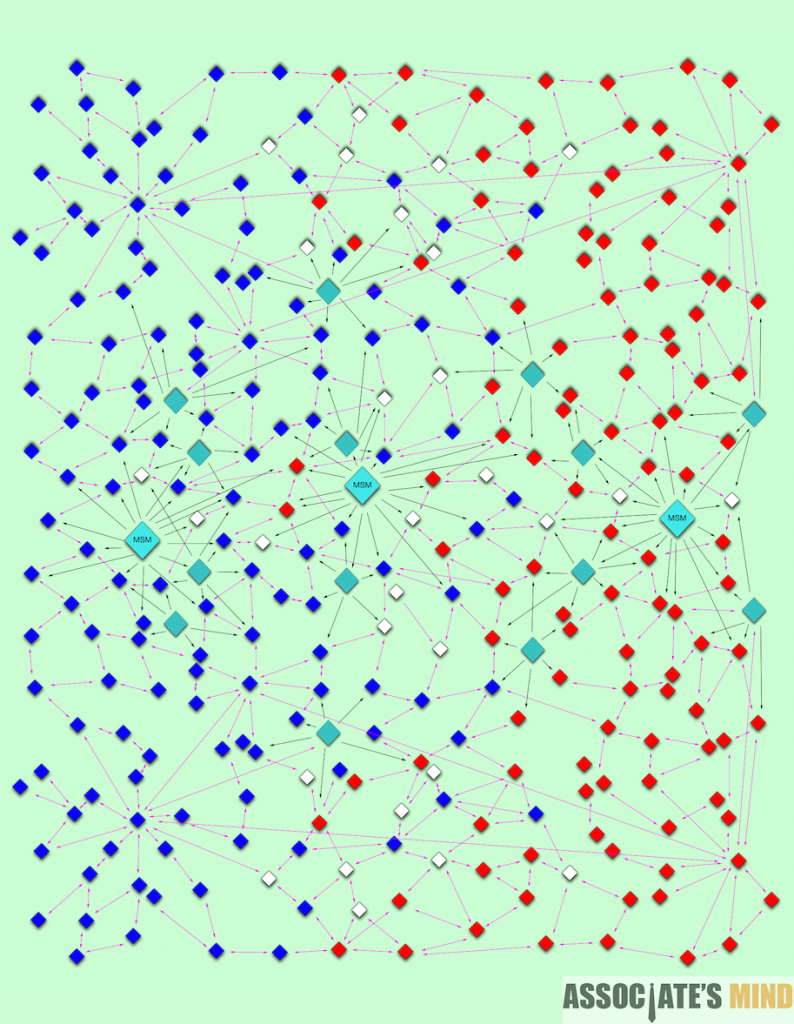

Click for large version.
In a network model, two-way connections become the dominant means of information exchange. It’s not that one-way, broadcast only connections don’t exist, but they’re only part of a greater network.
The only reason MSM has any significance is due to their legacy infrastructure and position atop the cascade model. MSM outlets are aware of this shift and are doing everything to maintain their positions of authority and relevance. It’s why certain MSM outlets are default installations in your web browser, social media network, or phone. MSM outlets pay the platform holders for those positions. They don’t want to lost their traditional authority position.
All Become Equal
A couple of other things should have stood out in the above image as well. The number of connections between some of the non-media nodes, and regular nodes are equal or greater. And some of the non-media nodes now have two-way connections with the second-tier MSM nodes.
In the network model, any node has the potential to transmit as much information as any other node on the network (with some limitations).


Non-media nodes change size, illustrative of the number of their connections.
Previously, the only way for a person to increase their influence was to move through MSM. People molded themselves into certain public political preferences and opinions so MSM would allow them their place atop the cascade model. But in a network, any node can (potentially) become as influential and important as any other node. Generally, a node’s importance is only limited by two things:
- The number of network connections.
- The strength of the network connections.
In a cascade model, what matters is positioning and number of connections. High numbers of connections are important because there are few competing sources of information. Whoever has the higher position on the cascade, with the largest number of connections, is likely to have the widest reach and influence. But this falls apart in a network system.
In the network system, what matters is not only the number of connections, but the strength of each connection.
Weak v. Strong Connections
Most intuitive notions of the “strength” of an interpersonal tie should be satisfied by the following definition: the strength of a tie is a (probably linear) combination of:
- the amount of time the tie has existed,
- the emotional intensity of the tie,
- the intimacy (mutual confiding) of the tie, and
- the reciprocal services which characterize the tie.
– From The Strength of Weak Ties by Mark S. Granovetter.
All the relationships in your life are not equal. There are incredibly strong connections with your immediate family, your children, spouse, parents, etc. Next are your close friends. Then perhaps acquaintances and co-workers. People you know from clubs or hobbies. Distant cousins. Friends of friends. Internet buddies. There exists a wide spectrum of connections in your life.
The traditional cascade model only supports two of the above categories: 1) The amount of time the tie has existed, and 2) the emotional intensity of the tie. The traditional cascade is unable to provide intimate or reciprocal ties because it is one-way, it isn’t social.
In contrast, the network system has the ability to excel in all four categories that build strong relationships. As people adopt social media and join community networks, they find new, non-MSM nodes that explicitly coincide with their private preferences. They establish intimate, reciprocal relationships with them.
What effect do you think this has on the spread of information?
From Hierarchy To Heterarchy
But we’re still not actually categorizing things correctly. The cascade model describes what happens within the top-heavy traditional system. When we talk about the network system, we haven’t described a model of how information moves through it yet. We’ve been mixing systems and models.
This was intentional and meant to confuse you a bit. Sorry.
The previous 5,000 words were what a teacher means when they say “show your work.” Now we can properly classify things.
In order to understand information distribution within the new, network model, let’s break apart the traditional system and its information distribution model.


Highlighted green – Top Tier nodes. Highlighted pink – cascade.
The above diagram shows the traditional system, heavily weighted at the top, where position is immensely important. This is a hierarchy.
A hierarchy is a system giving those at the top influence and control of those below them. It is difficult to move from one level of the hierarchy to the next. Its central design requires greater numbers on the lower levels than the top ones.
Within a hierarchy, levels denote authority. Someone on a higher level is not necessarily more qualified, more intelligent, or more skilled than you. They might be, or they might not. That doesn’t matter. What matters is that they are above you. That alone gives them authority and influence over you.
The purpose of a hierarchy is to cede influence and authority to nodes above you (whether you want to or not). A hierarchy is fundamentally about control through imposed structure.
In contrast, there is no rigid hierarchy in a network system, merely a loose, ever-changing web of connections. A network system is not anarchy, as there is still structure to it. Yet its structure is self-regulating rather than prescribed. Connections form, change, and dissolve as needed.
A network system is a heterarchy – a system of organization where elements of the organization are unranked or possess potential for multiple, changing ranks. Influence and function shift according to mutual benefit. Control in a heterarchy comes from nodes choosing to form connections with other nodes for some utility or purpose. A heterarchy is fundamentally about control through adaptive adherence.
The Amorphous Dispersal Model
A new model is needed to fully describe how information spreads through a heterarchical information system. The cascade model doesn’t acknowledge or take account of the adapting, self-organizing structure of a social media. Nor does it take into account the spectrum of connections within it.
Instead of a model which values position of connections, a model needs to value strength of connections.
Hierarchy -> Cascade
Heterarchy -> Amorphous Dispersal


A – MSM. B, C, D – regular network nodes.
Let’s examine the above diagram.
Hierarchy
If A wants to influence C, A sends information through the hierarchy, by means of a cascade.
- A has positional authority over C by virtue of being higher up the cascade. A is also “closer” to C in terms of positioning; only two nodes separate A and C.
- A only has one-way connections. The of the nodes between C and A are two-way, but they are still weak. They have narrow bandwidth.
- It is difficult for A to influence or transmit information to C.
- While difficult for A to influence C, when cascades are the only means of information distribution, C likely relies on A.
Heterarchy
If B wants to influence C, B sends information through the heterarchy, by means of amorphous dispersal.
- B has no positional authority over C. B is also “farther” from C.
- All of the connections between B and C are strong. They have wide bandwidth.
- It is easy for B to influence or transmit information to C.
- As long as B has stronger connections to C than any other information source, C likely relies on B.
Let’s change things a bit.
Now A is directly connected to D. In a traditional system that relies on cascades, this is an ideal arrangement. A should have a high degree of influence on D.
But when the hierarchal system has to co-exist with the heterarchical system, does it have the same impact? Can the cascade model compete with the amorphous dispersal model? Let’s insert High and Low signals into this diagram.
A hot button political issue arises. D is neutral on the issue and has not received any public signals on the issue.
A supports the issue, while B and C oppose it. A broadcasts a High signal on the issue (in support). B and C broadcast Low signals on the issue (in opposition).
- D receives a High signal directly from A, via a weak connection.
- D receives a Low from B & C through intermediary nodes, via multiple, strong connections.
Which does D choose?
Same hot button political issue. This time D privately supports the issue, but has not received public signals on the issue.
A supports the issue, while B and C oppose it. A broadcasts a High signal on the issue. B and C broadcast Low signals on the issue.
- D receives a High signal directly from A, via a weak connection.
- D receives a Low signal from B & C through intermediary nodes, via multiple, strong connections.
Which does D choose?
Same, hypothetical hot button political issue. This time D privately opposes the issue, but still has not received public signals on the issue.
A favors the issue, while B and C oppose it. A broadcasts a High signal on the issue. B and C broadcast Low signals on the issue.
- D receives a High signal directly from A, via a weak connection.
- D receives a Low from B & C through intermediary nodes, via multiple, strong connections.
Which does D choose?
Starting To Figure Out How Trump Became Popular Yet?
In all of the above situations, D will likely favor information and influence from their strong connections. When the cascade model competes with the amorphous dispersal model, the amorphous dispersal model almost always win.
Who has more authority and influence in your life? The TV or your wife? Your child’s principal or your child? Your boss or your mother? The newspaper or a person you’ve regularly chatted with on Facebook for four years (but have never met in person)? Does their influence and authority over you come from the position of their relationship to you or from the strength of their relationship with you?
Trusted relationships come from strong connections. You might rely on a company’s brand in some fashion, but you don’t have a reciprocal, trusted relationship with them. You don’t share your secrets with the New York Times and they don’t share theirs with you. People form relationships with other people. People who they connect with, respond to, and rely on.
- Social media allows for more reciprocal and intimate connections between nodes, generating strong connections.
- Stronger connections, higher bandwidth connections, pass information more quickly than weak ones.
- Connections providing the fastest, most easily consumed information, are the most relied upon connections. Again, think heuristics (Hell, think Google!).
- The most relied upon connections, are the most trusted connections.
Communities Form By Adaptive Adherence
So how does social media build these strong connections? How do people attain positions of authority and influence within the amorphous dispersal model?
Through recursive, self-reinforcing feedback loops. As people use social media and form relationships with other people in community networks, they share and broadcast information that elicits feedback from the network.
A photo gets lots of “Likes” on Facebook? Post more photos like it. A Tweet gets no re-Tweets or Likes? Stop Tweeting about that topic. Each interaction with the community network trains you to adjust your behavior to garner feedback from the community network.
Adaptive adherence begins. People shift information, sharing, and connections based on feedback; forming communities around central concepts, identities, and information. People who enjoy the new Star Wars movie. People in support of gay marriage. Sports, religion, politics, hobbies, entertainment. Anything that people can form communities around, they will.
This is not a rigid structure, but ever-changing, based on the needs of the community. Information will flow through it freely, with nodes adopting various positions of importance.
Positions of influence emerge from within the community network, not by being prescribed by some outside force. Through sharing, dialogue, and feedback, community networks boost certain members to the forefront. Those desiring these positions build as many strong connections as possible, while simultaneously broadcasting information (their own or someone else’s).
What emerges in an amorphous dispersal model are “alpha-level” influencers. Alpha-level influencers are not ordained by some authority, but work into positions of prestige and influence within the community network themselves.
Availability Events Emerge
So what happens when a significant new piece of information is introduced into a community? An availability event occurs – some activity or development that generates attention of a community network, and is reinterpreted and redistributed through the community network to signal or test adherence.
An availability event can be any number of things: a terrorist attack, sexual harassment, a research study, or a car accident. Anything that begins to generate feedback within a community network. People within a community use availability events to signal adherence (“We won the gold medal! USA! USA!”) or to test adherence (“That’s not what it means to be American, is it?”).
Availability events can start large or small, but scale based upon the degree in which alpha-level influencers adopt them for broadcast. If no alpha-level influencers adopt an availability event, it likely won’t have much reach. If multiple alpha-level influencers adopt an availability event, it has the potential to be adopted by the rest of the community.
As an availability event is accepted and adopted by more members of the community surrounding alpha-level influencers, an availability assembly will form – a temporary formation around an availability event.
Types Of Alpha-Level Influencers
All of this leads to a simple conclusion: alpha-level influencers have immense impact in the amorphous dispersal model.
Community networks don’t have to accept the interpretation of an availability event they initially receive. Instead, members re-broadcast the availability event to the rest of their community, seeking feedback from alpha-level influencers. Once an availability event reaches alpha-level influencers, they:
- Breakdown the availability event, looking for ways it can be be used for feedback loops within the community network.
- Frame the availability event in a manner consistent with the feedback loops used by the community network.
- Re-broadcast the re-framed availability event with a new feedback loop, signaling or testing adherence.
As people rely and trust their community network, and the alpha-level influencers within it, they adopt the re-framed interpretation of the availability event. It doesn’t matter how MSM or anyone else framed the availability event. What matters is if the availability event can provide a feedback loop which signals or tests adherence within a community.
Let’s look at a few types of alpha-level influencers.
Availability Journalists
Availability journalists are alpha-level influencers providing news and commentary to their communities. They piggyback their journalistic message or perspective on top of availability events.
Journalists are slow to adapt to amorphous dispersal as most journalists aspire to be part of the traditional cascade. Their ability to be an alpha-level influencer is subsumed by the media outlet they work for. MSM doesn’t want individual journalists to wield influence or become alpha-level influencers – MSM wants its brand, its outlet to be the alpha-level influencer.
But some journalists exploit amorphous dispersal to side-step MSM and establish themselves as alpha-level influencers. An early proto-example is Matt Drudge.
Matt Drudge
Matt Drudge is an American political commentator and the creator and editor of the Drudge Report, a news aggregator.
Core message: Libertarian
Community Networks: Email subscribers (initially), Conservatives, News producers, News media, Politicians, Beltway insiders, Political consultants
Goals: Influence, small government
In early 1995, Drudge Report had 1,000 email subscribers. By 1997, it had 85,000 subscribers, but the focus largely transitioned to the website. Drudge’s website gained notoriety in the late 1990s after breaking a number of stories before the mainstream media.
Sample Availability Events:
- 1996 Jack Kemp as Bob Dole’s Running Mate
- 1998 Monica Lewinsky Scandal
- 2000 Al Gore Buddhist Temple fundraising
- 2004 Kerry Swift Boat Scandal
- 2007 John Edwards $400 haircut
- 2015 Rock Star Trump
For Drudge, availability events were a means to boost his influence and “set the agenda” for MSM. At this point, Drudge has practically become part of the establishment as so many MSM producers rely on Drudge Report as a bulletin board for the latest gossip and news.
In the modern social media era in which the amorphous dispersal model fully blossomed, a journalist seizing advantage of availability events to a degree that almost no other has is Milo Yiannopoulos.
Milo Yiannopoulos
Milo Yiannopoulos is a British journalist. He is the Technology Editor for Breitbart.com, a United States-based conservative news and opinion website.
Core message: Cultural Libertarianism
Community Networks: Technology enthusiasts, Conservatives, Gamergate, Libertarians, Gay Advocates, Republicans,
Goals: Acquire larger audience, promote Cultural Libertarianism
In 2011, Yiannopoulos founded the self-described tabloid, The Kernel, which focused technology and Internet culture. After selling The Kernel in 2014, he moved onto Breitbart.com, where he is now the Technology Editor.
Sample Availability Events:
- 2014 Snowden – Frames Snowden as a diva, deconstructs his image.
- 2014 Gamergate – Frames the gaming controversy as a cultural rebellion. Ongoing.
- 2015 Shaun King – Series of ongoing reports framing Black Lives Matter activist as a fraud.
- 2015 SWSX – Frames cancellation of debate over gaming diversity as censorship of his views.
- 2015 Universities Ban Him From Speaking – Frames banning as censorship of cultural libertarianism
- 2015 Star Wars – Frames Star Wars as populist and progressive-pandering.
- 2015 Comments Sections Closing – Frames MSM closing of comments sections as leftist.
- 2015 Social Justice Warriors (SJWs) – Frames SJWs as controlling, domineering authoritarians. Ongoing.
Yiannopoulos builds strong connections with multiple communities, takes availability events as they arise, and re-frames them in terms of cultural libertarianism for his audience. For Yiannopoulos, availability events are a means to boost his profile, cultural libertarianism, and his speaking events.
The clearest sign of Yiannopoulos’ popularity and influence came in early January 2016, when Twitter, in a controversial move, “unverified” his account. As a result, his supporters flooded the service. Thousands changed their profiles to his picture and name, marking their messages with “#JeSuisMilo.” In the first 24 hours after Yiannopoulos’ account was suspended, the hashtag became one of the top trending in the world. It is difficult to imagine another journalist of his stature receiving such a response.
As the traditional cascade continues to be displaced by amorphous dispersal, journalists wishing to break stories, gain influence, and build an audience must become alpha-level influencers and generate adaptive adherence.
Availability Entrepreneurs
Availability entrepreneurs are alpha-level influencers who sell or promote something to a community.They piggyback their sales or promotions on top of availability events.
Like Amazon, Google, Facebook, and more, availability entrepreneurs emerged from the incredibly low cost of starting a business online. Entrepreneurs were the quickest to adapt to the amorphous dispersal model, as they are always looking for new business opportunities and means to exploit them. An early proto-example is Ramit Sethi.
Ramit Sethi
Profile: Ramit Sethi is an American personal finance advisor and entrepreneur. Sethi is the author of founder of iwillteachyoutoberich.com (“IWTYTBR”) and author of the New York Times Bestseller by the same name, I Will Teach You To Be Rich.
Core message: Rich life
Community networks: Email subscribers (initially), Entrepreneurs, Job Seekers, MSM, Self-Improvement, Luxury, Psychology, Marketing, Lifestyle, Relationships
Goals: Grow company, champion rich life
In 2004, Sethi started his blog, IWTYTBR, focusing on personal finance after fielding numerous questions about it while at college. Sethi made some forays into Silicon Valley before focusing on growing his blog into a business. As IWTYTBR continued to grow, and his book becoming a New York Times Bestseller, Sethi pivoted towards MSM attention.
Sample Availability Events:
- 2006 NPR/Katrina Fund drives – Frames them as an opportunity to discuss leverage.
- 2007 New Year Resolutions – Begins a series of posts framing the new year/resolutions as an opportunity to focus on a rich life (ongoing).
- 2008 Disaster Preparedness – Use stories on disaster planning to discuss personal finance and social psychology.
- 2009 New Year Resolutions – Ongoing.
- 2009 Stimulus Plan – Those worrying about “popular” issues have limited ability to see big picture, whether it be on politics or personal finance. Frames himself as having tangible solutions.
- 2009 Scarlett Johansson – Uses celebrity coverage as means of association.
- 2010 New year Resolutions – Ongoing.
- 2011 Capital One acquisition of ING Direct – Uses bank consolidation as opportunity to discuss making “big gains” in money management via behavioral change. Offers his solutions.
Sethi takes availability events as they arise and re-frames them in terms of a rich life for his community networks. For Sethi, availability events were a means to grow IWTYTBR from a fledgling financial blog into one of the most dominant personal development companies online.
In the modern social media era, thousands of entrepreneurs continually attempt to establish themselves as alpha-level influencers. Here are two diametrically opposed availability entrepreneurs with recent success.
Anita Sarkeesian
Profile: Anita Sarkeesian is a media critic, blogger, and public speaker. She is the founder of Feminist Frequency, a website hosting videos and commentary analyzing portrayals of women in popular culture. She received particular attention for her video series Tropes vs. Women in Video Games, examining tropes in the depiction of female videogame characters.
Core message: Feminism
Community Networks: Feminists, Social Justice Warriors, Gamergate, MSM, Gaming Media, Game Developers, Liberals
Goals: Advance upwards on hierarchal model, champion feminism
In 2009, Sarkeesian started her blog about feminism and geek culture. Sarkeesian gained prominence by examining games through feminism, became active on social media, and quickly garnered attention. Shortly thereafter, she began writing for secondary MSM outlets.
Sample Availability Events:
- 2011 Feminism – Series of commentaries on Youtube. Frames popular music videos, video games, etc. from a feminist perspective.
- 2012 Academy Awards – Writes about the Awards and frames them using the Bechdel Test to support feminist theory of media.
- 2012 Kickstarter – Uses coverage/controversy of her feminist criticism to raise $130,000+ on Kickstarter
- 2013 – Speaks at conferences on feminism and gaming. Meets with harassment via Gamergate, re-frames and broadcasts harassment as a response to feminist critique
- 2014 Utah campus gun laws – Pulls out from speaking, feels unsafe. Frames lack of support due to views on feminism.
- 2014 NYTimes – Profile of Sarkeesian as “Feminist Critics of Video Games Facing Threats in ‘GamerGate’ Campaign”
- 2014 Colbert Report – Discussion of Gamergate, frames herself as standing against misogyny.
- 2015 United Nation’s “Cyber Violence Against Women and Girls: A World-Wide Wake-Up Call” – Speaks to UN about “cyberviolence,” frames herself as victim for supporting feminism.
Sarkeesian takes availability events as they arise and re-frames them in terms of feminism for her community networks. For Sarkeesian, availability events are a means to boost her profile for consulting services and move towards MSM.
In contrast, the next availability entrepreneur eschews MSM coverage (but occasionally receives it anyway).
Michael Cernovich
Profile: Michael Cernovich* is a lawyer, author, and public speaker. He is the founder of the blog Danger & Play, focusing on masculinity in modern culture. He is the author of Gorilla Mindset, one of the most popular non-fiction books released in 2015. Cernovich received particular attention for his involvement with the Gamergate controversy.
Core message: Mindset
Community Networks: Men’s Rights Activists, Self-Improvement, Fitness, Book Publishing, Marketing, Lawyers, GamerGate, Alt-right, Conservatives
Goals: Sell information products (books/videos), champion masculinity
In 2004, Cernovich started the legal blog Crime & Federalism, which brought him attention and standing within the online legal community. In 2011, Cernovich started Danger & Play, writing about masculinity and modern culture. He became active in men’s social media communities and quickly garnered attention.
* Disclosure: Cernovich is a long-time friend. His inclusion here is because he serves as an optimal example.
Sample Availability Events:
- 2014 GamerGate – Cernovich becomes involved due to his interest in 1st amendment issues, uses controversy attention to promote Danger & Play/mindset.
- 2015 Shorty Awards – Nominated for award, then removed. Frames removal as strength of mindset.
- 2015 Ahmed Mohamed “Clock bomb kid” – Cernovich frames event as a hoax, demonstrates ability to use mindset to correctly interpret events.
- 2015 Seth Rogen – Cernovich “trolls” actor Seth Rogen, claims to have “cucked” him. Promotes mindset as means to prevent cucking.
- 2015 Syrian Refugee Crisis – Amid Syrian refugee crisis, Cernovich frames his own photo journalism in Europe as “the real story.” Promotes sales of books to further journalism.
- 2015 Stoya Rape Allegation – Frames porn actress claims of rape as fake. Promotes books as means to develop proper mindset to handle false rape claims.
- 2015 Dean Obeidallah Debate – Comedian/blogger backs out of debate, Cernovich frames it as the power of mindset.
Cernovich takes availability events as they arise and re-frames them in terms of mindset for his community networks. For Cernovich, availability events are a means to boost his profile as a source for information products that develop mindset.
As the traditional cascade continues to be displaced by amorphous dispersal, entrepreneurs and businesses wanting to gain prominence, develop leads, and obtain more customers must become alpha-level influencers and generate adaptive adherence.
Availability Politicians
Availability politicians are alpha-level influencers who promote themselves or their political message. They piggyback their politics on top of availability events.
Like journalists, politicians were not forced to adapt to the amorphous dispersal model. Politicians were content to rely on the traditional media cascade to promote themselves and their message. But that all changed in 2007, with the proto-example of President Barack Obama.
President Barak Obama
Profile: Barack Obama is the 44th and current President of the United States, as well as the first African American to hold the office.
Core message: (Official) “Change We Can Believe In”
(Unofficial) “Yes We Can”
Community networks: Democrats, Young voters, Minorities, Progressives, Liberals
Goals: Win Democratic nomination
Obama was the first presidential candidate to understand and exploit social media. While other candidates were largely oblivious to it, Obama’s team embraced it.
Sample Availability Events (from 2008 campaign):
- Logo Use – Extensive use of branding and logo became a regular topic in political circles. Obama used it to frame himself as modern.
- Hope Poster – Stylized poster of Obama became a regular topic in political circles. Obama framed (literally) as an iconic individual.
- Citizenship – “Birther” movement questioned Obama’s citizenship. Obama framed claims as racism/ignorance and it became a dilemma for some Republicans.
- Obama’s name – Some people opposed to his candidacy became obsessed with Obama’s full name: Barack Hussein Obama and attempted to smear him by using it. Obama embraced his name and other candidates distanced themselves from the issue.
- Rev. Jeremiah Wright – Clips of racially and politically charged sermons from Obama’s pastor emerged. Obama responded with “A More Perfect Union,” viewed 1.2 millions times on Youtube within the first 24 hours.
- Social Media – Obama’s online popularity noted, but dismissed by traditional media.
During his initial nomination and presidential campaigns, Obama continually sought “teachable moments” (availability events). Obama went to both the traditional cascade and the amorphous dispersal model to spread his version of events and influence voters. Doing so, he wrested the Democratic nomination away from Hillary Clinton and won the presidency.
Hillary Clinton (counter-example)
Profile: Hillary Clinton is an American politician who served as the 67th United States Secretary of State under President Barack Obama from 2009 to 2013. She is the wife of President Bill Clinton, and was First Lady of the United States during his tenure from 1993 to 2001.
Core message: (Official) “Hillary for America”
(Unofficial): None
Community networks: Democratic Establishment, Washington DC Establishment Women, Boomers, MSM
Goals: Secure Democratic nomination for President
Clinton continues to rely on MSM and the traditional cascade to promote herself. When she attempts to generate adaptive adherence, she largely meets disaster:
- New efforts to bring spontaneity to the campaign – Planning spontaneity.
- Hilary Logo – Experts trash the logo.
- Emoji Blunder – Attempt to popularize her college plan via emoji.
Instead, Clinton continues to raise vast sums of money from SuperPacs, businesses, and big money donors. She spends this money at an incredible rate to push herself out in MSM, hoping that the cascade model still has enough influence to win the nomination and election.
Bernie Sanders
Profile: Bernie Sanders is an American politician and the junior United States Senator from Vermont. He is a candidate for President of the United States in the 2016 U.S. presidential election.
Core message: (Official) “A Political Revolution Is Coming”
(Unofficial) “Feel The Bern”
Community networks: Independents, Millennials, Leftists, Socialists, Democrats,
Goals: Wrest Democratic nomination away from Hillary Clinton
Sanders quickly became a popular candidate through his inelegant, but apparently authentic, use of social media. His message and tone struck a chord with younger voters, who self-organized into availability assemblies around him.
Sample Availability Events:
- Facebook Use – Sanders presents himself unfiltered on social media.
- 1st Republican Debate – Sanders live Tweets Republican debate, uses it as opportunity to counter/present his take on issues.
- Democratic Debate – Pundits and MSM declare Clinton the winner, all online, amorphous dispersal data proves otherwise.
- 2nd Republican Debate – Sanders again live Tweets debate, continues to grow social media presence.
- DNC Database Access – Sanders campaign accused of illegal access to DNC voter list. Sander frames event as DNC attempting to tip the scale towards Clinton.
- Reddit – Sanders has, by far, the largest presence on the social discussion site Reddit. The community favoring Sanders constantly scans stories on the site and regularly injects positive Sanders information.
Sanders inadvertently takes advantage of amorphous dispersal to a high degree. On Reddit, r/SandersForPresident has over 140,000 subscribers. The largest Clinton subreddit, r/hillaryclinton has only 1,401 subscribers. Barely half as many as r/AnybodyButHilary, a subreddit devoted to making sure she is not elected. Sanders doesn’t attempt to become an alpha-level influencer in community networks in which he his popular, they choose to assemble around him.
Amorphous dispersal allows communities to side-step MSM and choose which candidate they want to support. Many communities rejected the candidates they were “supposed” to support according to MSM. Speaking of…
Jeb Bush (counter-example)
Profile: Jeb Bush is an American businessman and politician who served as the 43rd Governor of Florida from 1999 to 2007. He is currently a candidate for President of the United States in the 2016 U.S. presidential election.
Core message: (Official) “Jeb can fix it!”
(Unofficial) None
Community networks: Republican establishment, Washington DC establishment, Boomers, MSM (initially)
Goals: Secure Republican nomination for President
Bush continues to rely on MSM and the traditional cascade to promote himself. When Bush intersects with amorphous dispersal, it is a disaster:
- Anchor Babies – After accidentally disparaging Hispanics, Bush attempts to shift meaning to Asians, is blasted for it on social media.
- “People need to work longer hours” – Attempts to talk about employment opportunities, instead appears out of touch.
- Low Energy – Trump labeled Bush as having “low energy.” It stuck.
Like Clinton, Bush raised vast sums of money from SuperPacs, businesses, and big money donors. He continues rapidly spending money, holding a dim hope that he can rely on MSM for a ‘hail mary’ return.
Jeb presents a distinct contrast from the candidate fully embracing amorphous dispersal and regularly generating adaptive adherence: Donald Trump.
Donald Trump
Profile: Donald Trump is an American business magnate, investor, author, television personality, and candidate for President of the United States in the 2016 presidential election.
Core message: (Official) “Make America Great Again!”
(Unofficial) “yuuuugggee!”
Community networks: Boomers, Whites, Republicans, Conservatives, Social Media, Business Owners, Nationalists
Goals: Win Presidential election
Trump is a gambler, but a strategic gambler. Recognizing the shift in information dispersal among people, Trump gambled that he could use his persuasion skills to win the Republican nomination. Think about it from his perspective – what was the worse that would happen? He would lose the nomination but become more popular?! Win/win situation for Trump.
Sample Availability Events:
- Critical of McCain’s War Record – Dismisses McCain, frames himself as being able to help veterans.
- Lindsey Graham’s Cell Phone – Trump gives out Graham’s phone number, frames himself as independent.
- Financial Disclosure – MSM reported on the official report, Trump reframes it, claiming he has “massive” fortune.
- Ejects Univision Reporter – MSM criticized, Trump reframes it to show that he won’t be intimidated by “PC police.”
- Democrat Debate – Trump says Clinton “got schlonged,” used bathroom too often. MSM criticized, Trump reframes that he speaks off the cuff and uses NY slang, making him an “average guy.”
- Mexican Border Wall – MSM criticizes building wall, Trumps uses it as opportunity to show that he would be a job creator.
- Muslim Travel Ban – We’ve covered this one already haven’t we?
- Trump, Twitter Genius – MSM slowly catching up to speed that Trump has side-stepped it and is communicating directly with people.
Trump embraces amorphous dispersal at every opportunity. Combined with his clever use of cognitive biases and heuristics, it’s little wonder that he is the forerunner in the Republican campaign.
As the traditional cascade continues to be displaced by amorphous dispersal, politicians wanting to gain prominence and win elections must become alpha-level influencers and generate adaptive adherence.
What You Say
Sanders and Trump, the unconventional candidates who embrace amorphous dispersal, have slogans about other people.
Sanders talks about the “political revolution coming from the American people.” Sanders’ unofficial “Feel the Burn” is usually in the context of “Do you feel the Burn,” making the listener part of the slogan. Trump speaks about how “Together, we can make America great again.” Or “Let’s make America great again.” Obama’s slogans “Change we can believe in” and “Yes we can” accomplish the same.
The focus of these slogans is not the candidates, but the recipient. It involves the listener. It invites a connection and gives a sense of belonging.
In contrast, Bush and Clinton, the traditional candidates who rely on the MSM cascade, have slogans about themselves.
Their names are literally part of their slogans. “Hilary For America.” “Jeb Can Fix It!” The slogans are meant to be pushed out and repeated like a monotonous metronome. “Hey! It’s us! Same as the old boss!” “Hey! It’s us! Same as the old boss!”
These slogans don’t help signal or test community adherence. They fail at establishing connections. They don’t involve the listener. They are about the candidate, not about the communities they are attempting to reach.
That’s not to say that Trump and Sanders will win their perspective nominations or the presidency. But their rise and popularity, without MSM support, really with MSM opposition, points to the diminishing strength of traditional MSM. It may not be this election, but in the coming decade, politicians who win elections will be the ones who can most skillfully navigate amorphous dispersal of information.
How To Get People To Care About What You Have To Say
As should be obvious at this point, you’ve just read all of this because of an availability event. That’s how I got you to pay attention to what I have to say.
- Are you reading this because you saw something about it on network television or because you heard about it from a friend or social media connection you trust and rely on?
- If alpha-level influencers hadn’t shared this information, would it have reached you?
- When this was shared with you, was it accompanied by a message that reinforced a community?
- Was the information accompanied by a call to action or mobilize?
- If I hadn’t tied this to Trump to catch your attention, would you have read it?
Trump’s popularity is the most prominent example yet that MSM is losing its impact on large amounts of the American people. His ascendancy presents an ideal opportunity to discuss amorphous dispersal of information and how alpha-level influencers use adaptive adherence to form availability assemblies around availability events.
- An availability event occurs, broadcast by MSM and/or social media. Trump re-frames it using cognitive biases and heuristics that coincide with his core message. Trump side-steps MSM and pushes out his re-framed availability event on social media.
- Information about the availability event spreads via amorphous dispersal through community networks.
- Alpha-level influencers interpret and reframe the availability event. If these alpha-level influencers are Trump supporters, they use Trump’s interpretation, along with some tweak to fit their own goals (availability entrepreneurs use it to sell, etc).
- People accept feedback loops and narratives from their communities via adaptive adherence, not narratives from MSM.
- People form availability assemblies across multiple communities, signaling or testing adherence with the feedback loops about the availability event.
Now do you see why MSM struggled to explain Trump’s popularity? They lacked a framework, they lacked the vocabulary, to describe how information spreads between people and how they adapt and interpret it.
Not only do they lack an understanding of this new model, they fear it.
MSM continually tries to shoehorn Trump, Sanders, and events related to them into the traditional cascade model. To control the narrative that surrounds Trump and Sanders. But they can’t. The traditional model doesn’t take into account the vast amounts of people who receive information via amorphous dispersal.
Communities constantly signal or test adherence. What defines the community? What binds it together? Who provides the the feedback loops that provide the most utility? Who will be an alpha-level influencer?
Communities are constantly selecting alpha-level influencers. With the presidential election, people are picking a leader. People are electing an alpha-level influencer, not for a specific network community, but to represent American society as a whole. Which candidate provides the ideal interpretation of an availability event? Which candidate provides feedback loops offering the most utility, offering the best methods of adherence?
Given the massive acceptance of social media by American society, is it really any surprise that the candidates adept at amorphous dispersal are the ones dominating the polls?
As new availability events occur, and assemblies morph and change, the process continues on. A constantly fluctuating pattern of adaptation to new information. Availability assemblies breaking apart, shaping and re-forming like a school of fish.
You Can’t Curate An Ocean
People often say that we live in an age of curation. Being a “curator” became fashionable in the early 21st century. Article after article lauded the importance of curation. Curators will be the ones to influence and impact in society! They go to the firehose of information and separate the bad from the good.
Curate Twitter lists. Filter Facebook. Fill your RSS. Recommend tv shows for your DVR. 500 channels at your fingertips. 1000s of podcasts to listen to. What shows are worth watching on Netflix and Amazon. Which news network to favor. Snapchat, email, Slack, websites. Information goes on and on and never ends.
A firehose is a misnomer. It has been for some time.
Information is an ocean. We are all submerged in it.
At any given point, you might receive information about an availability event from a dozen different sources: tv, email, news alert, Facebook post, text message, a Tweet. If the availability event is significant enough, information about the availability event envelops you. In this environment, curation falls apart.
Interpretation become the dominant means of influence.
Inter – “between” and pret possibly “to spread abroad” or “to traffic in, sell.”
MSM used to be the only “between” between you and an availability event; whether it be news, sports, entertainment, politics, or anything else. MSM would spread or traffic their understanding of events. MSM would expound the meaning of events and render clear what the takeaways should be.
Now there can be countless intermediaries between you and an availability event. You might watch an availability event live on MSM or Periscope, or it might reach you after filtering through Reddit or Twitter. Awash in torrents of information, what matters is whose interpretation you turn to, whose version of the truth you want to accept.
The interpretation of events you choose no longer has to come from MSM. For better or worse, you now have a choice as to which interpretation of events you wish to accept. Choose a conservative or liberal point of view. Choose an explanation that supports or opposes what you believe. Accept a positive or a negative interpretation of events. Choose CNN or some random guy on Twitter. And because of amorphous dispersal they’re going to choose someone like Trump rather than accept whatever narrative the media throws their way.
There are nearly limitless interpretations of events, just as there are nearly limitless points of view. Some will be more prominent than others. Some few dominant ones will rise above all the rest, with offshoots and ancillary interpretations supporting the dominant interpretation that takes hold across the largest groups of people.
What does this mean?
Interpretation is the potential to provide people with thoughts and ideas to adopt as their own.
Interpretation is the capacity to provide meaning and understanding for other people.
Interpretation is the power to shape other people’s perception of reality.
It’s Your Choice
Again, a hierarchy is fundamentally about control through imposed structure, while a heterarchy is fundamentally about control through adaptive adherence. At the moment, they co-exist. But how much longer will this continue? There is one other, fundamentally important point that should have stood out through all this.
Whoever controls the underlying network structure, controls everything.
Facebook, Twitter, Reddit, Snapchat, etc. are just attempts to own and control the underlying connections between people and enforce hierarchical control over them.
- Control over what information you see.
- Make sure ads are displayed to you, even if you aren’t aware of it.
- To encourage you to consume information, not create it.
- Limit what you can say.
While social media has given people more options and choice than ever before, there are also attempts to reign this power in. Whenever anyone wants to restrict speech, limit connections, or say something should not be allowed, it is a slow creep back to hierarchical control. Remember Twitter’s unverification of Milo Yiannopoulos? It’s an attempt to control what others can say or do.
Twitter is a private company, free to do what it chooses with its platform, not a government entity quelling free speech. You have no inherent right to use Twitter. But as people spend more time within private networks like Twitter and Facebook, and less time in the web at large, they increasingly become the default network for many. These private networks end up functioning as a sort of “public commons.”
Whoever controls the network has the power to put their thumb on the scale regarding speech and behavior they disagree with. Not because they are an alpha-level influencer or because communities formed around them. But because control of a network means they have a “higher position” than those who merely exist on the network. A hierarchy remains, it just becomes invisible. Which also makes it more nefarious.
Twitter did not “censor” Yiannopoulos, they unverified him. Twitter gave Yiannopoulos a slap on the wrist. It is an attempt to “nudge” him and everyone else like him. Twitter wants to use libertarian paternalism and active engineering of choice architecture to influence and control people on their platform. Which is fine if you want a secret cabal of people you don’t know making decisions for you. But if you believe people are capable of being rational actors, then libertarian paternalism limits everyone’s choices.
That’s why the free, open web is important. It is not about a conservative or liberal bias. It is not a right or left issue.
Almost any push towards censorship, any attempt at quelling or stifling voices, is a push away from heterarchy and back towards hierarchical control. It’s abandoning peer-to-peer and going back to the client-server model. It means all animals are equal, but some animals are more equal than others.
Allowing free expression of ideas, thoughts, and speech is of vital importance for people to make decisions as they wish. Anything less is an attempt to create a separate class of people who determine what others are allowed to say.
Amorphous dispersal is a difficult environment in which to exist. It requires you to think for yourself. It means being offended, scared, and confused. It also means discovery, learning, and challenge. It’s up to you who to trust and what to believe. You’ll think that your decisions are the right ones, while others’ are foolish.
People will choose networks you don’t like or spread information you think is foolish. They will accept versions of the truth you think are wrong or offensive. People will make bad decisions, but they will also make good ones. Which is which will depend on your point of view and whose interpretation of events you choose to accept.
But those are their decisions to make, not yours.
[divider]
Post Script: There is only one way to test whether amorphous dispersal rules the day. It’s quite simple really, but I need your help with it. I hope it’s not too much to ask, it’s something you do everyday anyway. If amorphous dispersal resonates with you, if it reflects your experience, the way you consume and interpret information:
You need to share this on social media.
Even better, if you have a blog, podcast, Youtube channel, etc, go create something about your own experiences with amorphous dispersal.
Take the core message of amorphous dispersal:
and adapt it for your own. Re-frame so it signals or tests adherence in your communities.
The concept of amorphous dispersal depends on you. It’s not being broadcast on television. People won’t read about it in a newspaper. The only way this idea will spread and grow is if you take action.
It’s your choice.
P.P.S – Now that you’ve read this, go spend two minutes looking at your social network feeds (really go do this), then come back and scroll down…
Do you see the Matrix now?
🙂





